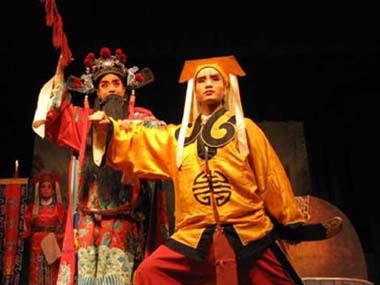 Jul. 17, 2025
Jul. 17, 2025
Weather
More about Qinqiang
2009-06-25 20:21 BJT
There are generally two kinds of arias in Qinqiang Opera: Huan yin ("joyous tune") and Ku yin ("sad tune"). Each type was used in accordance with the plots and figures. The major accompanying instrument used is the Ban hu (a stringed instrument), featuring a clear and melodious sound.
Qinqiang performances are characterized by a simple, bold, exquisite and penetrating, yet exaggerated style. The roles are categorized into 13 types, namely, four types of sheng (male roles in traditional Chinese opera), six dan (female characters), two jing (painted-face characters) and one chou (clown).
 |
The different dialects of various areas and types of folk music have contributed to slight differences in the opera itself in terms of pronunciation, aria, music etc, forming four major genres. In recent years, the major genre in and around Xi'an has played a dominant role in innovating and developing the art form.
Qinqiang Opera songs are sonorous, bold and touching; its music is colorful and elegant; and its performances on the whole are plain, exquisite and lively. Furthermore, it boasts such unique performing skills as spitting fire and hat dances by the performers.
However, since the 1980s, local operas have struggled for survival, despite their long history and cultural value. Sadly, Qinqiang Opera is no exception. Cultural specialists are working hard to preserve the art form; some have even proposed to enlist Qinqiang Opera as an "Intangible World Heritage."
Editor: Zhao Yanchen | Source: CCTV.com Mail
Mail Share
Share Print
Print


 Video
Video









 2009 China Central Television. All Rights Reserved
2009 China Central Television. All Rights Reserved